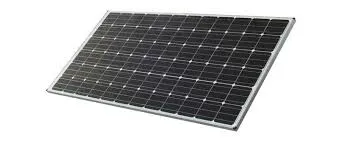Innovative Advances in Perovskite Solar Panel Technology for Enhanced Energy Efficiency
The Promise of Perovskite Solar Panels A Revolution in Renewable Energy
In recent years, perovskite solar panels have emerged as a groundbreaking technology in the realm of renewable energy. Named after the mineral perovskite, these solar cells have shown impressive efficiency and potential for transforming the solar energy landscape.
Perovskite materials have a unique crystal structure that allows for efficient light absorption and charge carrier mobility. This means that they can convert sunlight into electricity more effectively than traditional silicon-based solar panels. In laboratory settings, perovskite solar cells have achieved efficiencies exceeding 25%, which is on par with, and in some cases even better than, many conventional solar technologies.
One of the most appealing attributes of perovskite solar panels is their low manufacturing cost. Unlike silicon cells, which require extensive processing and high-temperature treatment, perovskites can be produced using simpler methods, such as solution processing or printing techniques. This not only lowers production costs but also reduces the energy input required for manufacturing, making them an environmentally friendly alternative.
The versatility of perovskite materials is another compelling aspect. They can be integrated into a variety of surfaces, enabling the development of lightweight and flexible solar panels. This opens up new possibilities for applications, from solar windows in buildings to portable energy solutions for electronic devices. As a result, perovskite technology could expand the reach of solar energy to areas previously deemed unsuitable for traditional panels.
perovskite solar panel

However, there are challenges that need to be addressed before perovskite solar panels can fully penetrate the market
. One significant concern is the stability and durability of these materials. Early perovskite cells have demonstrated sensitivity to moisture and heat, leading to degradation over time. Researchers are actively working on enhancing the stability of these materials to ensure their long-term performance in real-world conditions.Another barrier to commercialization is the potential health and environmental risks posed by lead, a common ingredient in many perovskite formulations. While efforts are underway to develop lead-free alternatives, the current reliance on this toxic element raises concerns about the lifecycle and disposal of perovskite solar panels.
Despite these hurdles, the future of perovskite solar technology looks bright. Ongoing research and development are paving the way for more robust materials and innovative applications. As advancements continue, it is not far-fetched to envision a future where perovskite solar panels play a significant role in a sustainable energy ecosystem.
In conclusion, perovskite solar panels represent a promising leap forward in solar energy technology. With their high efficiency, cost-effectiveness, and versatility, they hold the potential to transform the way we harness sunlight. As the challenges are overcome, the integration of perovskite cells into our energy infrastructure could accelerate the shift toward a cleaner, more sustainable future.
-
String Solar Inverter: The High-Efficiency Solution for Smart Solar EnergyNewsJul.14,2025
-
Revolutionizing Rooftop Energy with the Power of the Micro Solar InverterNewsJul.14,2025
-
Power Independence with Smart Off Grid Solar Inverter SolutionsNewsJul.14,2025
-
On Grid Solar Inverter: Powering the Future with Smart Grid IntegrationNewsJul.14,2025
-
Monocrystalline Solar Panels: High-Efficiency Power for the Future of Clean EnergyNewsJul.14,2025
-
Bifacial Solar Panel: A Smarter Investment for Next-Generation Energy SystemsNewsJul.14,2025







